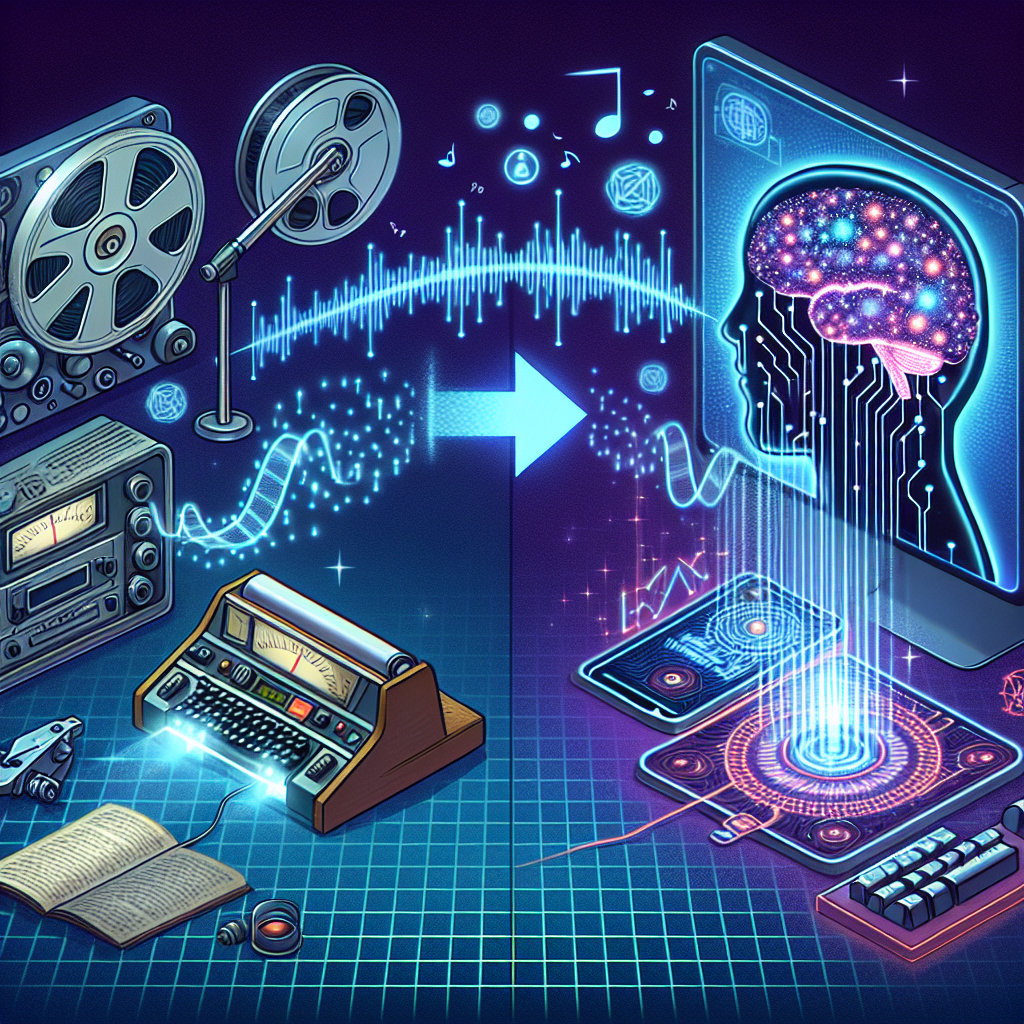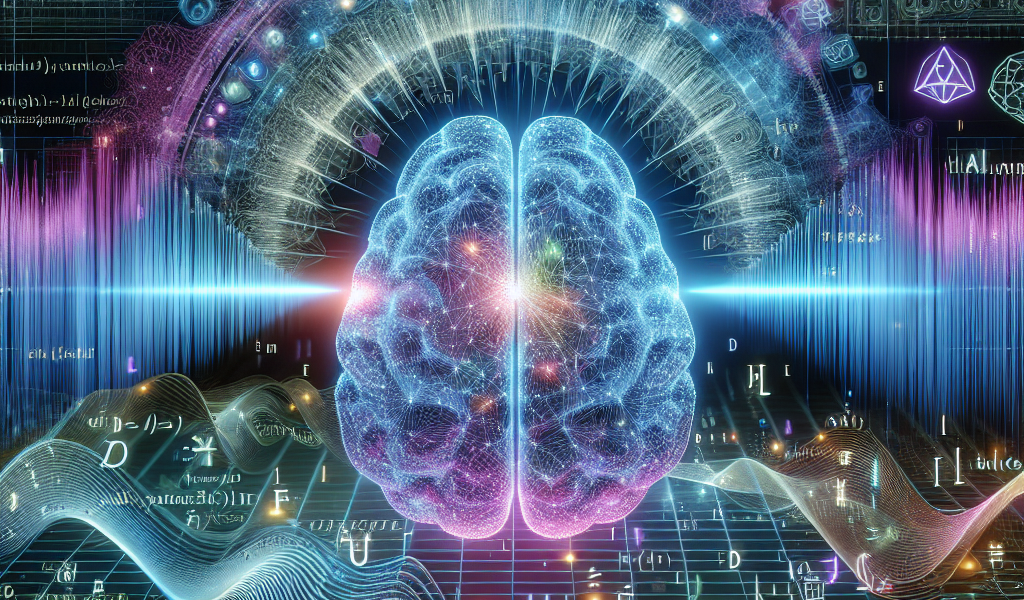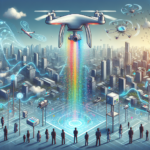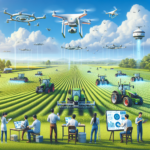-
Table of Contents
“Revolutionizing Communication: AI’s Leap in Speech Recognition Technology”
Introduction

Artificial Intelligence (AI) is revolutionizing the field of speech recognition, bringing unprecedented accuracy and efficiency to the way machines understand and process human language. By leveraging advanced machine learning algorithms and neural networks, AI-driven speech recognition systems can now transcribe spoken words into text with remarkable precision, even in noisy environments or with diverse accents. This transformation is enabling a wide range of applications, from virtual assistants and real-time translation services to improved accessibility for individuals with disabilities. As AI continues to evolve, it promises to further enhance the capabilities of speech recognition technology, making human-computer interaction more seamless and intuitive than ever before.
Enhancing Accessibility: How AI Is Revolutionizing Speech Recognition for the Disabled
Artificial intelligence (AI) is making significant strides in various fields, and one of the most impactful areas is speech recognition. This technology, which allows machines to understand and process human speech, is revolutionizing accessibility for individuals with disabilities. By enhancing communication capabilities, AI-driven speech recognition is breaking down barriers and fostering inclusivity in ways previously unimaginable.
To begin with, AI-powered speech recognition systems are becoming increasingly accurate and efficient. Traditional speech recognition technologies often struggled with understanding diverse accents, dialects, and speech impediments. However, advancements in machine learning and neural networks have enabled AI to learn from vast datasets, improving its ability to recognize and interpret a wide range of speech patterns. This progress is particularly beneficial for individuals with speech disabilities, as it allows for more accurate and reliable communication.
Moreover, AI-driven speech recognition is not just about understanding words; it’s about comprehending context. Modern AI systems can analyze the nuances of speech, including tone, pitch, and emotion. This capability is crucial for individuals with disabilities who may rely on assistive technologies to convey their thoughts and feelings. For instance, someone with a motor impairment might use a speech-generating device that leverages AI to produce more natural and expressive speech, thereby enhancing their ability to interact with others.
In addition to improving communication, AI is also making everyday tasks more accessible. Voice-activated assistants like Siri, Alexa, and Google Assistant are becoming indispensable tools for people with disabilities. These AI-driven assistants can perform a variety of tasks, from setting reminders and sending messages to controlling smart home devices. For individuals with mobility impairments, this hands-free interaction can significantly enhance their independence and quality of life.
Furthermore, AI is playing a pivotal role in education for students with disabilities. Speech recognition technology can transcribe lectures in real-time, providing instant access to written notes for students who are deaf or hard of hearing. This not only ensures they don’t miss out on important information but also allows them to participate more fully in classroom discussions. Additionally, AI can assist students with learning disabilities by converting spoken instructions into text, making it easier for them to follow along and understand the material.
The workplace is another area where AI-driven speech recognition is making a difference. For employees with disabilities, this technology can facilitate more effective communication and collaboration. For example, AI can transcribe meetings and generate summaries, ensuring that everyone is on the same page. It can also assist in customer service roles, where clear and accurate communication is essential. By providing these tools, employers can create more inclusive work environments and tap into a broader talent pool.
Despite these advancements, it’s important to acknowledge the challenges that remain. Ensuring that AI systems are inclusive and unbiased is a critical concern. Developers must continue to refine these technologies to recognize and respect the diverse ways people speak. Additionally, privacy and security are paramount, as speech recognition systems often handle sensitive information. Ongoing efforts to address these issues will be crucial in maximizing the benefits of AI for individuals with disabilities.
In conclusion, AI is transforming speech recognition in ways that significantly enhance accessibility for the disabled. By improving communication, facilitating everyday tasks, supporting education, and fostering inclusive workplaces, AI-driven speech recognition is breaking down barriers and opening up new possibilities. As technology continues to evolve, it holds the promise of creating a more inclusive and accessible world for everyone.
The Role of AI in Improving Speech Recognition Accuracy and Efficiency
Artificial intelligence (AI) is revolutionizing various aspects of our lives, and one of the most significant areas of impact is speech recognition. This technology, which allows machines to understand and process human speech, has seen remarkable advancements in recent years, largely due to the integration of AI. The role of AI in improving speech recognition accuracy and efficiency cannot be overstated, as it has brought about a new era of seamless human-computer interaction.
To begin with, AI has significantly enhanced the accuracy of speech recognition systems. Traditional speech recognition relied heavily on pre-programmed algorithms and a limited set of vocabulary, which often led to errors and misunderstandings. However, with the advent of AI, particularly machine learning and deep learning, these systems have become much more sophisticated. By training on vast datasets of spoken language, AI models can now recognize and interpret speech with a high degree of accuracy. This is particularly evident in the way AI can handle different accents, dialects, and even background noise, which were previously major hurdles for speech recognition technology.
Moreover, AI has made speech recognition more efficient. In the past, processing spoken language required significant computational resources and time. However, AI algorithms, especially those based on neural networks, have streamlined this process. These algorithms can quickly analyze and interpret speech in real-time, making it possible for applications like virtual assistants, transcription services, and voice-activated devices to respond almost instantaneously. This efficiency is not only convenient for users but also opens up new possibilities for the integration of speech recognition in various industries, from healthcare to customer service.
In addition to improving accuracy and efficiency, AI has also enabled speech recognition systems to become more adaptive and personalized. Through continuous learning, AI can adapt to an individual user’s speech patterns, vocabulary, and preferences. This personalized approach ensures that the system becomes more accurate over time, providing a better user experience. For instance, virtual assistants like Siri, Alexa, and Google Assistant use AI to learn from user interactions, thereby improving their ability to understand and respond to specific commands.
Furthermore, the role of AI in speech recognition extends beyond just understanding spoken words. AI can also analyze the context and intent behind the speech, which is crucial for more complex interactions. Natural language processing (NLP), a subset of AI, plays a vital role in this aspect. By understanding the nuances of human language, including idioms, slang, and context, NLP allows speech recognition systems to provide more relevant and accurate responses. This capability is particularly beneficial in customer service applications, where understanding the customer’s intent is key to providing effective assistance.
As we look to the future, the potential for AI to further transform speech recognition is immense. Ongoing research and development in AI are likely to bring about even more sophisticated and intuitive speech recognition systems. For example, advancements in AI could lead to better multilingual support, allowing users to switch between languages seamlessly. Additionally, AI could enable more natural and human-like interactions with machines, making technology even more accessible and user-friendly.
In conclusion, the integration of AI into speech recognition technology has brought about significant improvements in accuracy, efficiency, adaptability, and contextual understanding. These advancements have not only enhanced the user experience but also expanded the potential applications of speech recognition across various industries. As AI continues to evolve, we can expect even more groundbreaking developments in this field, further solidifying its role in transforming the way we interact with technology.
AI-Powered Speech Recognition: Transforming Customer Service and User Experience
Artificial intelligence (AI) is revolutionizing various industries, and one of the most significant areas of impact is speech recognition. This technology, which allows machines to understand and process human language, is transforming customer service and user experience in profound ways. As AI-powered speech recognition continues to evolve, it is becoming an indispensable tool for businesses aiming to enhance their interactions with customers and streamline their operations.
To begin with, AI-powered speech recognition is making customer service more efficient and accessible. Traditional customer service methods often involve long wait times and repetitive interactions, which can be frustrating for customers. However, with AI-driven speech recognition, companies can deploy virtual assistants and chatbots that understand and respond to customer queries in real-time. These virtual assistants are capable of handling a wide range of tasks, from answering frequently asked questions to processing transactions, thereby reducing the need for human intervention and allowing customer service representatives to focus on more complex issues.
Moreover, AI-powered speech recognition is not just about understanding words; it also involves comprehending the context and intent behind them. Advanced algorithms can analyze speech patterns, tone, and even emotions, enabling virtual assistants to provide more personalized and empathetic responses. This level of sophistication helps build stronger customer relationships and enhances overall satisfaction. For instance, if a customer sounds frustrated, the AI can detect this and respond in a more soothing and supportive manner, thereby improving the customer experience.
In addition to customer service, AI-powered speech recognition is also transforming the user experience in various applications. Voice-activated assistants like Amazon’s Alexa, Apple’s Siri, and Google Assistant have become integral parts of many people’s daily lives. These assistants leverage AI to understand and execute voice commands, making it easier for users to perform tasks such as setting reminders, playing music, or controlling smart home devices. The convenience and hands-free nature of these interactions are driving widespread adoption and changing the way people interact with technology.
Furthermore, AI-powered speech recognition is breaking down language barriers and making technology more inclusive. With the ability to understand multiple languages and dialects, AI-driven systems can cater to a diverse user base. This inclusivity is particularly beneficial in global markets, where businesses can provide consistent and high-quality customer service regardless of the customer’s native language. Additionally, speech recognition technology is aiding individuals with disabilities by offering alternative ways to interact with devices, thereby promoting greater accessibility.
As AI-powered speech recognition continues to advance, it is also opening up new possibilities for innovation. For example, in the healthcare sector, AI-driven speech recognition is being used to transcribe medical dictations accurately, allowing healthcare professionals to focus more on patient care rather than administrative tasks. Similarly, in the education sector, AI-powered tools are being developed to assist with language learning and provide real-time feedback on pronunciation and grammar.
In conclusion, AI-powered speech recognition is transforming customer service and user experience by making interactions more efficient, personalized, and inclusive. As this technology continues to evolve, it is poised to become an even more integral part of our daily lives, driving innovation and improving the way we communicate with machines. The future of AI-powered speech recognition holds immense potential, and its impact will undoubtedly be felt across various industries, enhancing both customer satisfaction and operational efficiency.
Conclusion
AI is revolutionizing speech recognition by significantly enhancing accuracy, speed, and contextual understanding. Advanced machine learning algorithms and neural networks enable systems to better understand and process natural language, even in noisy environments. This transformation is leading to more effective voice-activated assistants, improved accessibility for individuals with disabilities, and streamlined operations in various industries such as customer service, healthcare, and automotive. As AI continues to evolve, speech recognition technology will become even more integrated into daily life, driving innovation and efficiency across multiple sectors.





